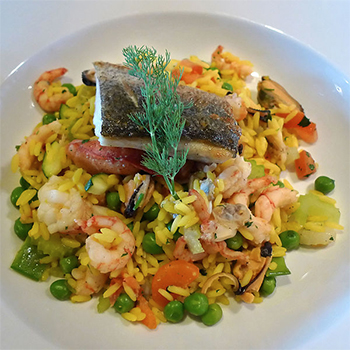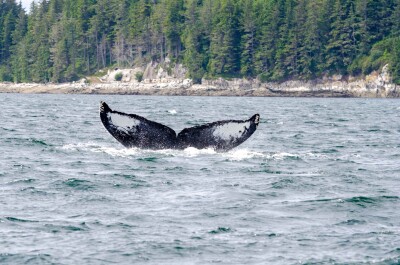This week the FDA and EPA released a joint revised recommendation on the amount of seafood pregnant and breastfeeding women should consume weekly. Since 2004, federal officials have recommended a weekly maximum amount of two servings (8 ounces) of low-mercury seafood for pregnant and breastfeeding women, as well as for children.
The new recommendation advises these people to eat a minimum of two weekly servings and a maximum of 12 ounces (about three servings). That’s a pretty narrow window that unfortunately will likely still serve to scare people away from seafood, when the effort is to reverse that trend.
“For years many women have limited or avoided eating fish during pregnancy or feeding fish to their young children,” said Stephen Ostroff, the FDA’s acting chief scientist. Officials believe this is because they were warning women to limit consumption. As long as they’re recommending a maximum, many moms will simply continue to avoid it just to be safe.
The problem is that in this case, playing it safe means offering less (or none) of some of the best food to your family. My question is, what is the real risk of pregnant women eating more than 12 ounces of low-mercury seafood every week? Is it worse than the risks to pregnant women who are eating more than 12 ounces of feedlot beef, pork or chicken?
This subject is near and dear to my heart as a mother and a mom-to-be. When I was pregnant with my 4-year-old, I craved tuna, and I ate it in all forms: canned albacore, canned chunk light, lightly seared sushi grade yellowfin, or grilled to a perfect medium if I didn’t know the source as well.
People often ask me if I was worried about the mercury. My answer is no. The reason is that even though I craved tuna and ate it once or twice a week, I also ate a lot of other proteins, including a variety of seafood — salmon, shrimp, lobster, hake, scallops and haddock are the top few that come to mind. (And though I am biased, I’m pretty sure my boy is perfect and one of the smartest preschoolers I know. And to this day, he plows through salmon, cod, calimari, tuna salad, steamed clams, you name it.)
Consumer advocacy groups are criticizing the government for not being specific enough about what kinds of fish specifically people should be eating. The avoid list amounts to the four species highest in methylmercury: Gulf of Mexico tilefish, king mackerel, swordfish and shark. After all, the purpose of the revision is to be *less* specific. I applaud the government on its step back from policing seafood consumption. We have become too reliant on lists and strict guidelines rather than using our own local markets and common sense to eat what’s available seasonally and locally. The difference between seafood and other forms of protein is that the options are so varied by region and even state to state that a recommendation for everyone to eat specific types of fish would be ludicrous.
Pregnant women are not that different than the rest of us. Yes, we have a few more rules to follow, and a short list of foods to avoid, again, just in case. But fish should never be one of them, nor should it be for the population at large. We should all be eating a variety of local (American if that’s the closest you can get), wild seafood. We should all be just as worried (if not more so) about what’s in our pork sausage (likely produced by a Chinese conglomerate) as the level of mercury in the fish we’re eating. But where do you find federal guidelines for consumption of chicken, beef and pork, and when was the last time you saw a headline about it?
I suppose the first step is to encourage Americans to eat more home-cooked meals, less processed and less fast food. Sure, we all need shortcuts from time to time. But if we rely on them a little less, then we might find that we’re healthier, happier and have more energy to complete the never-ending to-do lists of modern living.
Next, we should spread the word to our fellow citizens about what’s available locally and in season. The chances are, you won’t find it at Walmart or Super Target. But do you really want to buy your food from the same place that sells televisions and tires? It’s time to re-expand our horizons. Get out of the big-box and big-brother mindset, and discover what’s available from your community. Support what you love about the place where you’ve chosen to raise your children, for the health of your community as well as the health of your family.







